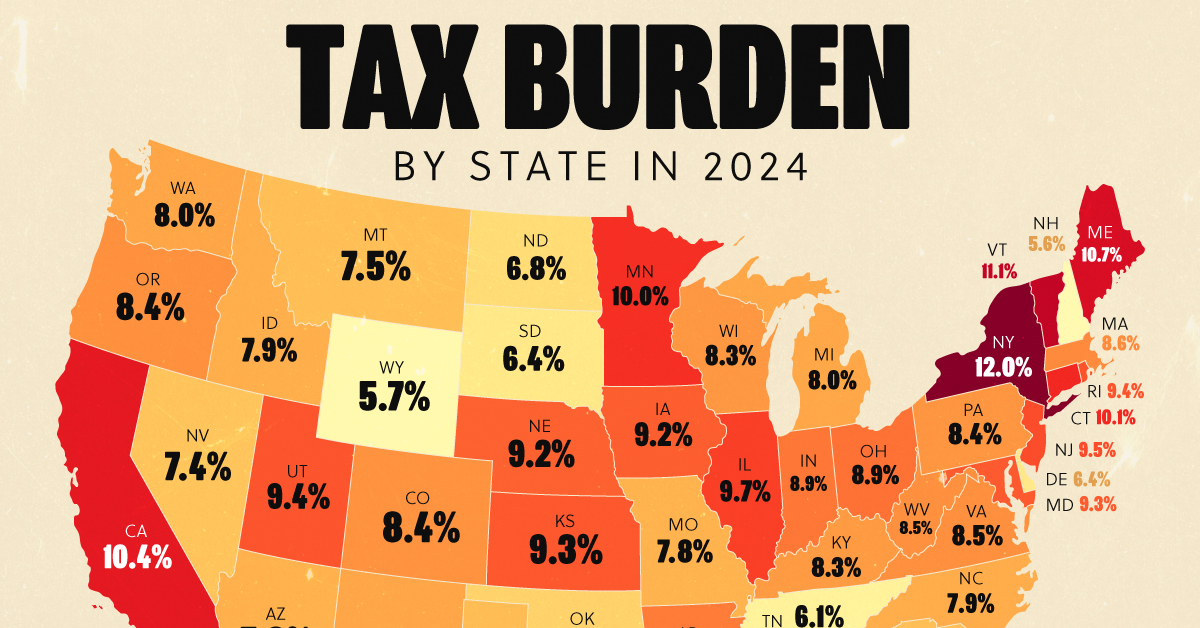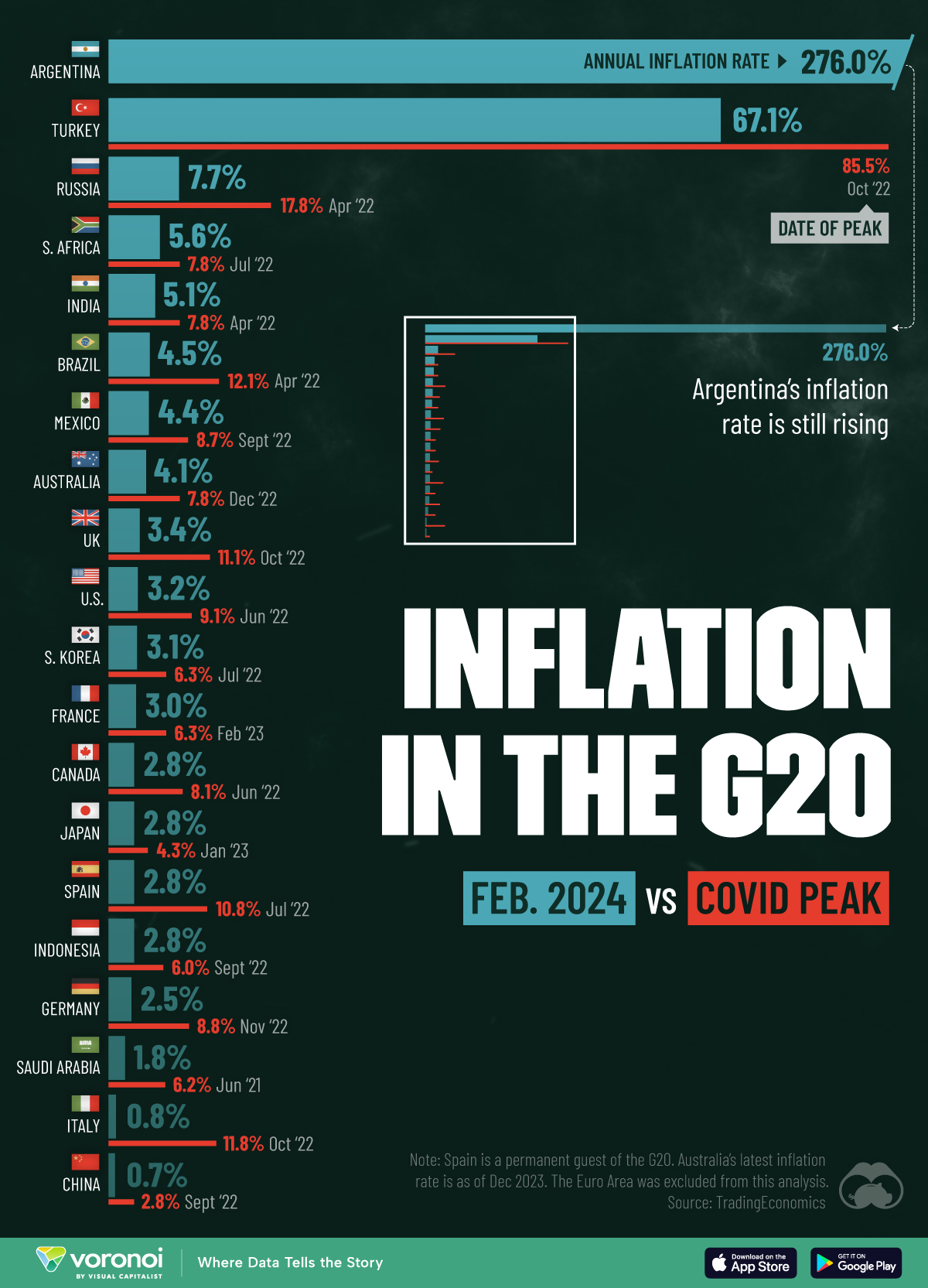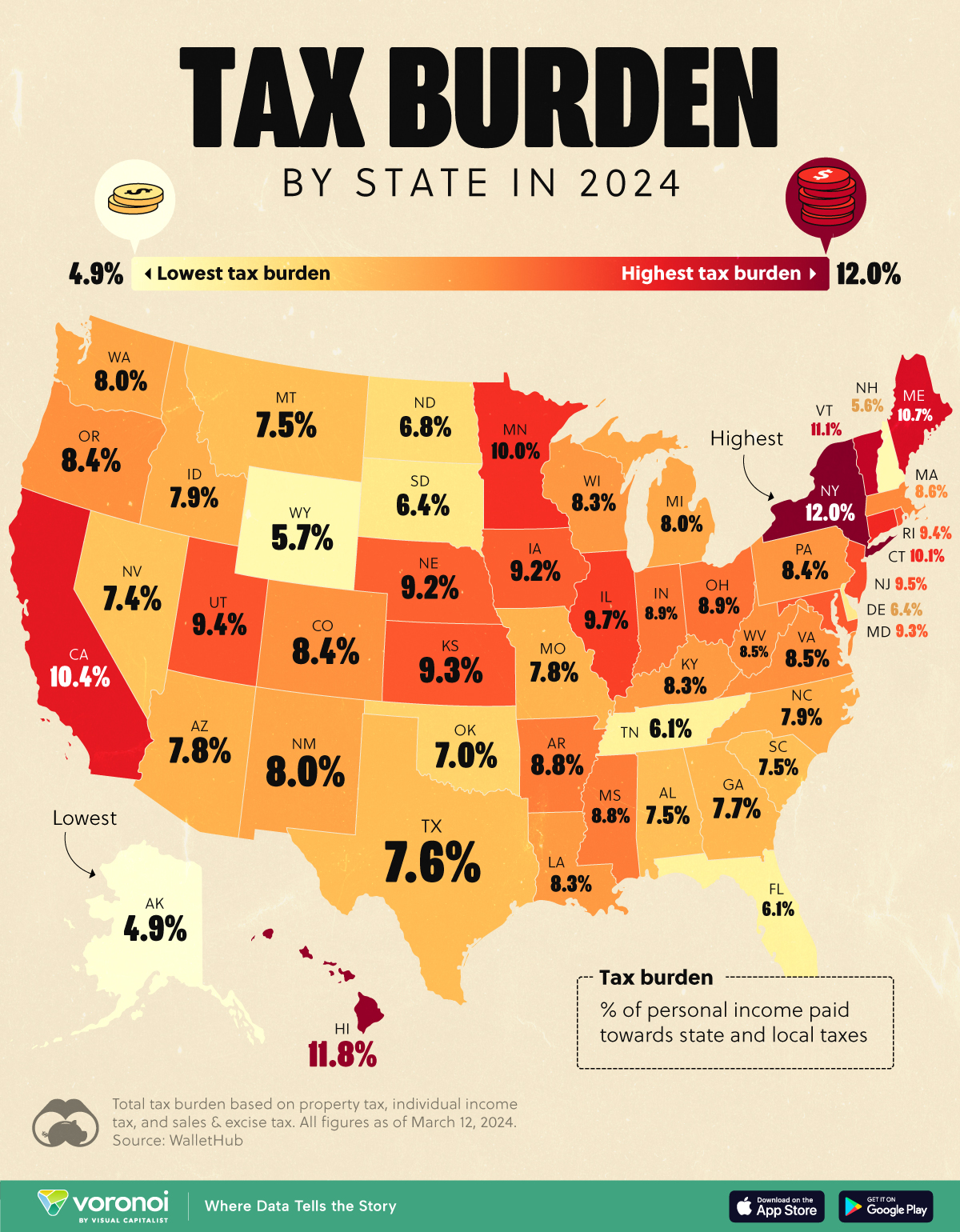Economy
G20 Inflation Rates: Feb 2024 vs COVID Peak
![]() See this visualization first on the Voronoi app.
See this visualization first on the Voronoi app.
How Far Have Inflation Rates Fallen Across the G20?
This was originally posted on our Voronoi app. Download the app for free on iOS or Android and discover incredible data-driven charts from a variety of trusted sources.
A major economic consequence that arose in the aftermath of the COVID-19 pandemic was high inflation. In many countries, inflation rates reached double-digits, which is significantly higher than the 2-3% typically targeted by central banks.
Generally speaking, an extended period of fast rising prices is not optimal because it erodes the purchasing power of money. This makes everyday essentials like groceries, rent, and gas more expensive.
To see how inflation is currently faring, we’ve visualized annual inflation rates across G20 countries as of February 2024, in the context of their pandemic peak. This data was sourced from Trading Economics and can also be found in the table below.
| Country | Inflation (%, Feb 2024) | Inflation (%, COVID peak) | Date of Peak |
|---|---|---|---|
| 🇦🇷 Argentina | 276.0 | -- | -- |
| 🇹🇷 Turkey | 67.1 | 85.5 | Oct 2022 |
| 🇷🇺 Russia | 7.7 | 17.8 | Apr 2022 |
| 🇿🇦 South Africa | 5.6 | 7.8 | Jul 2022 |
| 🇮🇳 India | 5.1 | 7.8 | Apr 2022 |
| 🇧🇷 Brazil | 4.5 | 12.1 | Apr 2022 |
| 🇲🇽 Mexico | 4.4 | 8.7 | Sept 2022 |
| 🇦🇺 Australia | 4.1 | 7.8 | Dec 2022 |
| 🇬🇧 United Kingdom | 3.4 | 11.1 | Oct 2022 |
| 🇺🇸 United States | 3.2 | 9.1 | Jun 2022 |
| 🇰🇷 South Korea | 3.1 | 6.3 | Jul 2022 |
| 🇫🇷 France | 3.0 | 6.3 | Feb 2023 |
| 🇨🇦 Canada | 2.8 | 8.1 | Jun 2022 |
| 🇯🇵 Japan | 2.8 | 4.3 | Jan 2023 |
| 🇪🇸 Spain | 2.8 | 10.8 | Jul 2022 |
| 🇮🇩 Indonesia | 2.8 | 6 | Sept 2022 |
| 🇩🇪 Germany | 2.5 | 8.8 | Nov 2022 |
| 🇸🇦 Saudi Arabia | 1.8 | 6.2 | Jun 2021 |
| 🇮🇹 Italy | 0.8 | 11.8 | Oct 2022 |
| 🇨🇳 China | 0.7 | 2.8 | Sept 2022 |
Notes: Spain is a permanent guest of the G20. Australia’s latest inflation rate is as of Dec 2023.
Unlike other G20 nations, Argentina’s inflation rate has only gone up since the pandemic ended. This is largely due to the country’s history of printing money to compensate for government overspending.
One area hit particularly hard is food prices. According to a local consultancy, the price of beef to consumers rose by 40% to 70% between July to August 2023.
Learn More About Inflation in 2024
If you want to see more graphics on inflation, check out this global map that visualizes inflation forecasts for every country in 2024.
Wealth
Visualizing the Tax Burden of Every U.S. State
Tax burden measures the percent of an individual’s income that is paid towards taxes. See where it’s the highest by state in this graphic.

Visualizing the Tax Burden of Every U.S. State
This was originally posted on our Voronoi app. Download the app for free on iOS or Android and discover incredible data-driven charts from a variety of trusted sources.
This map graphic visualizes the total tax burden in each U.S. state as of March 2024, based on figures compiled by WalletHub.
It’s important to understand that under this methodology, the tax burden measures the percent of an average person’s income that is paid towards state and local taxes. It considers property taxes, income taxes, and sales & excise tax.
Data and Methodology
The figures we used to create this graphic are listed in the table below.
| State | Total Tax Burden |
|---|---|
| New York | 12.0% |
| Hawaii | 11.8% |
| Vermont | 11.1% |
| Maine | 10.7% |
| California | 10.4% |
| Connecticut | 10.1% |
| Minnesota | 10.0% |
| Illinois | 9.7% |
| New Jersey | 9.5% |
| Rhode Island | 9.4% |
| Utah | 9.4% |
| Kansas | 9.3% |
| Maryland | 9.3% |
| Iowa | 9.2% |
| Nebraska | 9.2% |
| Ohio | 8.9% |
| Indiana | 8.9% |
| Arkansas | 8.8% |
| Mississippi | 8.8% |
| Massachusetts | 8.6% |
| Virginia | 8.5% |
| West Virginia | 8.5% |
| Oregon | 8.4% |
| Colorado | 8.4% |
| Pennsylvania | 8.4% |
| Wisconsin | 8.3% |
| Louisiana | 8.3% |
| Kentucky | 8.3% |
| Washington | 8.0% |
| New Mexico | 8.0% |
| Michigan | 8.0% |
| North Carolina | 7.9% |
| Idaho | 7.9% |
| Arizona | 7.8% |
| Missouri | 7.8% |
| Georgia | 7.7% |
| Texas | 7.6% |
| Alabama | 7.5% |
| Montana | 7.5% |
| South Carolina | 7.5% |
| Nevada | 7.4% |
| Oklahoma | 7.0% |
| North Dakota | 6.8% |
| South Dakota | 6.4% |
| Delaware | 6.4% |
| Tennessee | 6.1% |
| Florida | 6.1% |
| Wyoming | 5.7% |
| New Hampshire | 5.6% |
| Alaska | 4.9% |
From this data we can see that New York has the highest total tax burden. Residents in this state will pay, on average, 12% of their income to state and local governments.
Breaking this down into its three components, the average New Yorker pays 4.6% of their income on income taxes, 4.4% on property taxes, and 3% in sales & excise taxes.
At the other end of the spectrum, Alaska has the lowest tax burden of any state, equaling 4.9% of income. This is partly due to the fact that Alaskans do not pay state income tax.
Hate Paying Taxes?
In addition to Alaska, there are several other U.S. states that don’t charge income taxes. These are: Florida, Nevada, South Dakota, Tennessee, Texas, Washington, and Wyoming.
It’s also worth noting that New Hampshire does not have a regular income tax, but does charge a flat 4% on interest and dividend income according to the Tax Foundation.
Learn More About Taxation From Visual Capitalist
If you enjoyed this post, be sure to check out this graphic which ranks the countries with the lowest corporate tax rates, from 1980 to today.
-

 Markets5 days ago
Markets5 days agoVisualizing Global Inflation Forecasts (2024-2026)
-

 Green2 weeks ago
Green2 weeks agoThe Carbon Footprint of Major Travel Methods
-

 United States2 weeks ago
United States2 weeks agoVisualizing the Most Common Pets in the U.S.
-

 Culture2 weeks ago
Culture2 weeks agoThe World’s Top Media Franchises by All-Time Revenue
-

 voronoi1 week ago
voronoi1 week agoBest Visualizations of April on the Voronoi App
-

 Wealth1 week ago
Wealth1 week agoCharted: Which Country Has the Most Billionaires in 2024?
-

 Business1 week ago
Business1 week agoThe Top Private Equity Firms by Country
-

 Markets1 week ago
Markets1 week agoThe Best U.S. Companies to Work for According to LinkedIn













